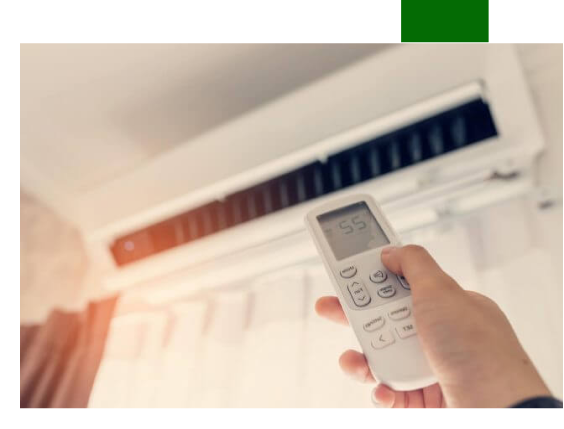
Beat the Heat and Bills: The Ultimate Guide to Boosting AC Efficiency
As the summer sun cranks up the heat, your air conditioner becomes your household MVP. But it’s time to rethink your approach if it’s guzzling energy and underperforming. Regular
can significantly reduce energy bills and extend the life of your unit. With a few smart moves, you can enjoy comfort without compromising your wallet or the planet.
Cool Comfort Starts Here: Why AC Efficiency Should Be a Priority
Poor AC efficiency means more energy is used, more frequent breakdowns, and bigger bills. Whether you’re using a central cooling system or a ductless mini-split, regular upkeep and mindful habits help your system run smoother, longer, and smarter.
Beyond personal comfort, improving AC efficiency has a ripple effect: it reduces the load on your power grid and helps shrink your carbon footprint. Investing in better
can help control humidity levels while maintaining cooling power.
Routine TLC: Maintenance Tips That Keep Your AC Running Smoothly
Filter Out the Problems
Clogged filters are the top culprit behind reduced AC efficiency. When airflow is restricted, your system struggles to keep up. That means more energy consumption and uneven cooling.
Clean or replace your air filter:
- Every 1–3 months in general use
- Monthly during heavy use or in homes with pets
Give the Outdoor Unit Some Breathing Room
A clogged or crowded condenser restricts airflow and limits cooling performance. Keep your outdoor unit clear of debris like leaves, weeds, and mulch. Aim for at least two feet of clearance around the unit.
Book a Pro Checkup Before the Heat Peaks
Even if your AC seems fine, it’s smart to schedule a professional HVAC inspection every year. Certified technicians can:
- Inspect refrigerant levels
- Test electrical components
- Clean condenser and evaporator coils
- Identify worn-out parts before they cause trouble
These annual tune-ups can drastically improve AC efficiency and prevent unexpected breakdowns.
Smart Upgrades and Habits That Make a Difference
Program for Performance
A programmable or smart thermostat is a small change that yields big results. By customizing your cooling schedule, you reduce unnecessary AC use during times you’re not home. Smart thermostats paired with effective
are a powerful duo for modern energy efficiency.
Insulate and Seal Every Gap
Cool air escapes faster than you think. Air leaks around windows, doors, and ducts force your system to work harder. That equals lost comfort and lower AC efficiency.
Quick fixes include:
- Weatherstripping
- Caulking gaps
- Duct sealing
- Attic insulation
Don’t Overcool—Find Your Comfort Zone
Setting your thermostat too low doesn’t cool faster; it just consumes more energy. The sweet spot for most homes is between 75–78°F. Find a comfortable setting and let your AC maintain a steady rhythm.
Stay Cool Without Overworking Your AC
Using fans and curtains strategically can lower indoor temperatures and give your AC a break.
Here’s how to help your AC do less work:
- Use ceiling fans to circulate air
- Keep blinds or curtains closed during peak sunlight hours
- Open windows during cooler evenings
- Limit oven and stove use on hot days
Boosting AC Efficiency: Tools and Tips at a Glance
Here’s a quick breakdown of simple ways to boost AC efficiency:
✅ Quick AC Efficiency Checklist
- [ ] Change air filters regularly
- [ ] Clear debris around the outdoor unit
- [ ] Schedule annual professional maintenance
- [ ] Use a programmable thermostat
- [ ] Seal air leaks and insulate
- [ ] Set realistic thermostat temperatures
- [ ] Use fans and window treatments smartly
📘 Efficiency Essentials
| Tip | Why It Matters |
|---|---|
| Clean filters | Ensures steady airflow and system performance |
| Smart thermostats | Cuts energy use by syncing with your schedule |
| Annual maintenance | Prevents costly repairs and enhances efficiency |
| Sealed leaks | Keeps cool air in and hot air out |
Understanding the Terms: AC Efficiency Explained
Here’s a quick glossary to better understand how AC efficiency works:
SEER (Seasonal Energy Efficiency Ratio): A measure of an AC unit’s cooling output divided by its energy use. The higher the SEER, the better the efficiency.
BTU (British Thermal Unit): A unit of heat. In AC terms, it reflects how much heat your system can remove per hour.
Energy Star Certified: Indicates that the unit meets energy efficiency guidelines set by the U.S. Environmental Protection Agency.
Thermostatic Expansion Valve: A component that improves AC efficiency by controlling the amount of refrigerant released into the evaporator.
Frequently Asked Questions About AC Efficiency
How often should I schedule maintenance for my AC unit?
At least once a year—preferably in spring. Preventive maintenance helps catch issues early and boosts AC efficiency.
Does turning off my AC when I leave improve efficiency?
It can, but using a programmable thermostat to raise the temperature while you’re away and lower it before you return is even better for both comfort and energy savings.
Can old AC units still be efficient?
Older systems tend to be less efficient. If your unit is over 10–15 years old, upgrading to a high-SEER model can significantly improve AC efficiency and lower long-term costs.
Is it worth investing in a smart thermostat?
Absolutely. Smart thermostats adapt to your habits and optimize AC efficiency, often paying for themselves in energy savings over time.
What’s the ideal temperature setting for AC efficiency?
Aim for 75–78°F when you’re home. Raising the temperature slightly when you’re out can improve AC efficiency without sacrificing comfort.